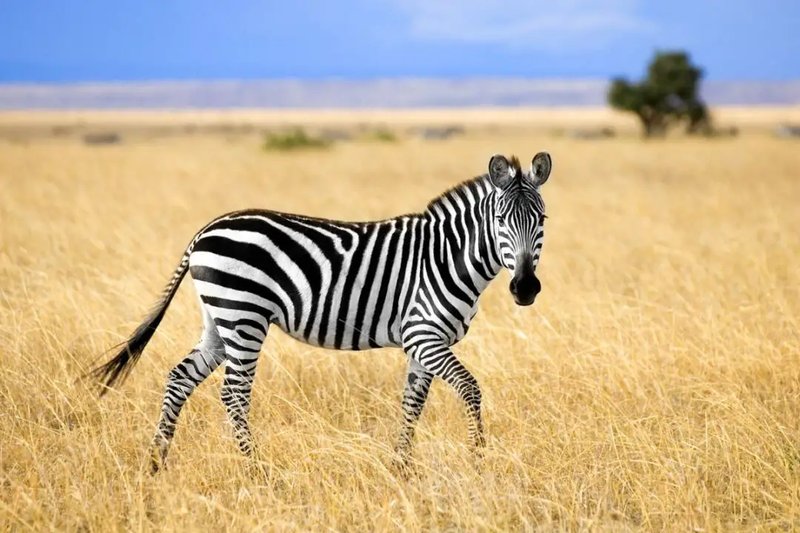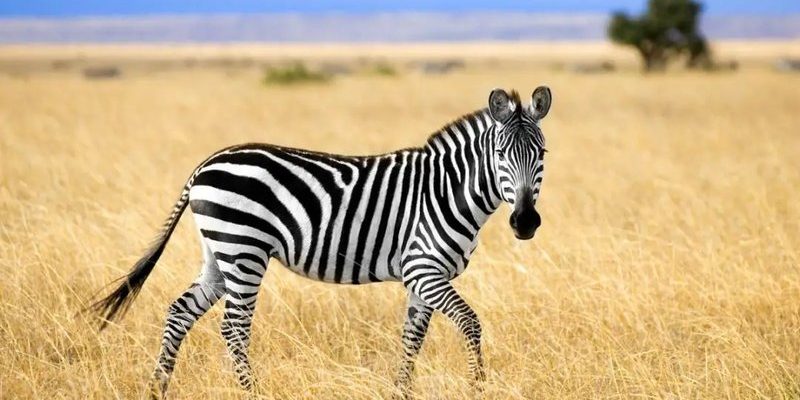
In this article, we’re diving deep into the world of animals that resemble the mountain zebra. We’ll explore their similarities and help you easily distinguish them from one another. Whether you’re a wildlife enthusiast or just curious about animals, this journey will be enlightening. So grab your favorite drink, and let’s explore some fascinating parallels in the animal kingdom!
1. Plains Zebra
The **plains zebra** is perhaps the most well-known zebra species and is often mistaken for the mountain zebra. Both have the iconic black-and-white stripes, but there are key differences. For starters, the plains zebra’s stripes are more spaced out and it tends to have a bulkier build. Imagine comparing two types of candy: both are sweet, but one might be a bit chewier.
When it comes to behavior, plains zebras live in larger herds and spend most of their time grazing on grasslands. This contrasts with the mountain zebra, which prefers rocky, hilly terrains. So, if you spot a zebra in an open field, there’s a good chance it’s a plains zebra doing its thing!
2. Grevy’s Zebra
Next up is the **Grevy’s zebra**, which is the largest zebra species. You can spot a Grevy’s zebra by its narrow stripes, which are closer together compared to the mountain zebra’s. It almost looks like someone carefully painted them on!
These zebras are typically found in the arid regions of East Africa and have longer ears and a more horse-like appearance. While both species have similar habitats, the Grevy’s zebra is more adapted to dry environments. Think of it like two different models of the same car, each engineered for different terrains.
3. Donkey
You might be surprised to find that **donkeys** share some similarities with mountain zebras! Both belong to the equine family and have a strong, sturdy build. However, donkeys lack the striking stripes. Instead, they often have a solid grey or brown color with some lighter markings.
Despite their differences in appearance, donkeys are known for their calm temperament and intelligence, making them excellent companions for humans. Imagine a mountain zebra with a soothing personality—it’s a fun mental picture, isn’t it?
4. Horse
Let’s talk about **horses**, another member of the equine family. Similar to mountain zebras, horses come in various breeds and colors, but the resemblance is more about their overall shape and size. Like zebras, horses have strong legs and a sociable nature.
However, the more striking difference lies in their behavior. Horses are often trained for various tasks, while mountain zebras remain wild and are not easily domesticated. Picture a horse trotting proudly in a show ring while a mountain zebra grazes peacefully on a hillside—each has its own story to tell.
5. Okapi
The **okapi** is a fascinating animal that often gets overlooked. While it isn’t a zebra, it shares similar habitats in the dense rainforests of Central Africa. What’s interesting is the okapi’s striped hindquarters, which can remind you of a zebra’s stripes, even if they’re not as bold.
These animals are more closely related to giraffes than they are to zebras. So, think of the okapi as the mysterious cousin of the mountain zebra, showcasing a blend of familiar and distinct features.
6. Bongo
**Bongos**, with their striking reddish-brown coat and white stripes, might not look like zebras at first glance. However, they share a similar habitat in the African forests. The bongo’s stripes serve as camouflage among the trees, much like how a zebra’s stripes help it blend into the grasslands.
Bongos are also known for their graceful movements and curious personalities. Picture them cautiously peeking out from behind the bushes, much like a mountain zebra might explore its rocky home.
7. Eland
The **eland** is another animal that can resemble the mountain zebra, particularly in size. These large antelopes have a robust body and are often found in similar environments. Although they don’t have stripes, their impressive horns and graceful gait can remind you of the mountain zebra’s majestic presence.
Elands are social creatures and often roam in herds. They thrive in dry savannas and woodlands, showcasing a different but equally beautiful aspect of African wildlife. If you see an eland grazing peacefully, think of it as the tall, elegant friend of the mountain zebra!
8. Gaur
Now, let’s look at the **gaur**, a large wild cattle found in South and Southeast Asia. While they may not share much in common with zebras visually, their sturdy build and strength can remind you of the mountain zebra. Gaur are often found in grasslands and forests, and like zebras, they are herbivorous grazers.
The comparison here is mainly in their powerful presence and the fact that they both play essential roles in their respective ecosystems. Imagine a herd of gaurs moving through the forest, much like a group of mountain zebras navigating rocky hills.
9. Waterbuck
The **waterbuck** is a large antelope often found near water bodies in Africa. They have a somewhat similar body shape to the mountain zebra but are covered in a shaggy, brownish coat instead of striking stripes. These animals are known for their distinctive white ring around their rear, which sets them apart.
Waterbucks are social animals, often seen grazing near rivers or lakes. While they may not have the zebra’s iconic look, they share the same environment and lifestyle, making them companions in the wild.
10. Kudu
Lastly, we have the **kudu**, another African antelope that brings a bit of drama to the animal kingdom. Kudus are known for their twisted horns and stripes along their bodies. Unlike the mountain zebra, the stripes on a kudu are more subtle and are designed for camouflage rather than striking beauty.
These animals prefer woodland areas and are known for their graceful leaps when they feel threatened. Picture a kudu bounding into the underbrush, much like a mountain zebra would trot away from danger—each responding in their unique way.
In conclusion, the world of wildlife is diverse and full of fascinating similarities and differences. The mountain zebra stands out with its dramatic stripes and mountainous habitat, but it shares its space with many other remarkable animals. By understanding these relationships, we can better appreciate the uniqueness of each species and the roles they play in their ecosystems. So the next time you encounter these animals, you’ll have a deeper understanding of their connections and differences. Isn’t that a wonderful way to connect with nature?

